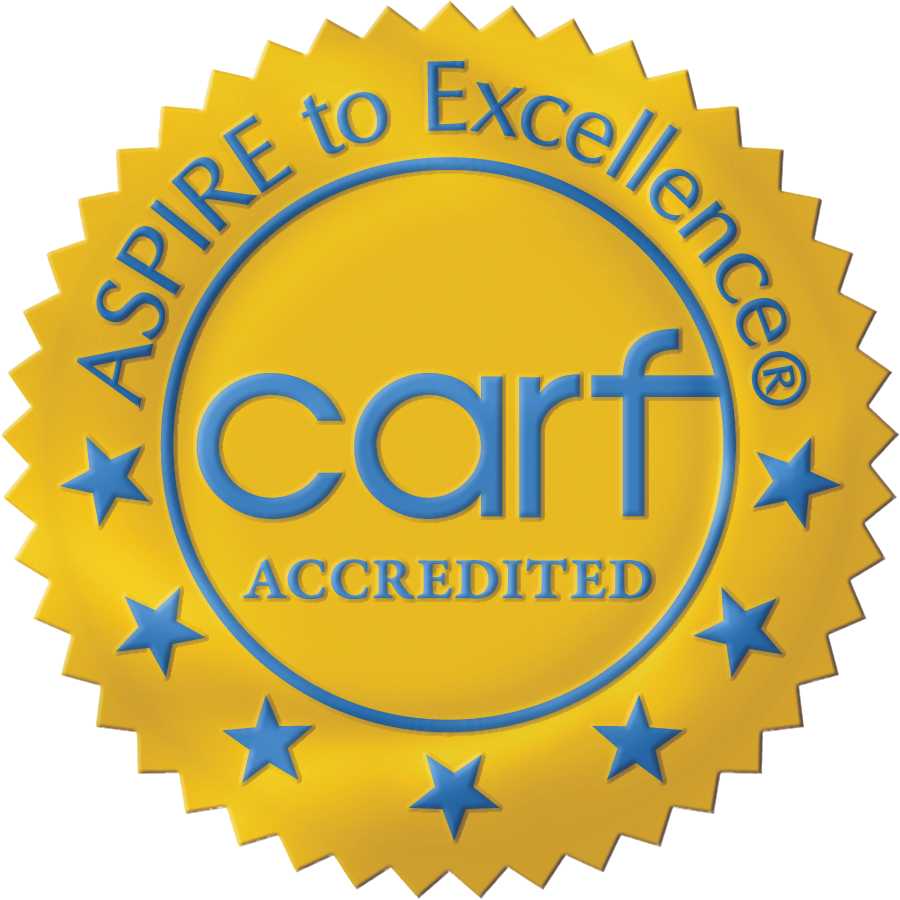Table of Contents
- What Happens During Alcohol Withdrawal?
- The Science Behind Alcohol Withdrawal
- The Complete Alcohol Withdrawal Timeline
- Factors That Influence the Alcohol Withdrawal Timeline
- The Importance of Medical Detox and Professional Treatment
- Managing Alcohol Withdrawal Symptoms
- What Comes After Withdrawal: Rehabilitation and Recovery
- Long-term Recovery and Ongoing Support
- Recognizing When Professional Help is Needed
- The Importance of Specialized Treatment Providers
- Addressing Protracted Withdrawal and Long-term Recovery
- Take the First Step Toward Recovery
When someone decides to stop drinking after prolonged alcohol use, their body must readjust to functioning without alcohol. This process, known as alcohol withdrawal syndrome, follows a predictable timeline that varies based on individual factors. Understanding the alcohol withdrawal timeline can help individuals and their loved ones prepare for what lies ahead during the early stages of recovery from alcohol use disorder.
What Happens During Alcohol Withdrawal?
Alcohol withdrawal occurs when someone who has developed alcohol dependence suddenly stops or significantly reduces their alcohol consumption. The brain, which has become accustomed to the presence of alcohol, experiences a range of physical and psychological symptoms as it works to regain neurochemical balance.
According to the National Institute on Alcohol Abuse and Alcoholism, symptoms of alcohol withdrawal can range from mild to severe and potentially life-threatening. This is why understanding the alcohol withdrawal timeline and seeking appropriate medical supervision from qualified medical professionals is crucial for anyone considering stopping alcohol use.
The Science Behind Alcohol Withdrawal
To understand the alcohol withdrawal timeline, it’s important to recognize how alcohol affects the brain’s neurotransmitter systems. Alcohol enhances the effects of GABA, the brain’s primary inhibitory neurotransmitter, while suppressing glutamate, an excitatory neurotransmitter. When alcohol is removed, GABA receptors become less responsive, and glutamate activity increases dramatically, leading to the hyperexcitability that characterizes withdrawal symptoms.
This neurochemical imbalance affects the seizure threshold and can lead to serious complications, including epileptic seizures and other neuropsychiatric complications. Understanding this neurochemical process helps explain why medical detoxification is essential for safe withdrawal management.
The Complete Alcohol Withdrawal Timeline
Stage 1: 6-12 Hours After Last Drink
The alcohol withdrawal timeline typically begins within 6 to 12 hours after the last alcoholic beverage. During this initial stage of the detox processes, individuals may experience:
- Mild anxiety and restlessness
- Hand tremors or shaking
- Headaches
- Nausea and vomiting
- Increased heart rate
- Difficulty sleeping
- Mood swings and irritability
- Early alcohol cravings
These early symptoms occur because alcohol is a central nervous system depressant, and when it’s removed, the nervous system becomes hyperactive as it tries to compensate. Medical professionals often recommend assessment during this crucial period to determine the appropriate level of care.
Stage 2: 12-24 Hours
As the alcohol withdrawal timeline progresses into the 12 to 24-hour mark, symptoms often intensify and may include:
- More pronounced tremors
- Increased anxiety and agitation
- Hallucinations (visual, auditory, or tactile)
- Confusion and disorientation
- Profuse sweating
- High blood pressure
- Rapid heartbeat
- Intensified alcohol cravings
The Substance Abuse and Mental Health Services Administration reports that hallucinations during withdrawal are relatively common and typically resolve within 48 hours with proper medical care. During this stage, individuals may require hospital monitoring to ensure safety.
Stage 3: 24-72 Hours (Peak Withdrawal)
The most critical period in the alcohol withdrawal timeline occurs between 24 and 72 hours after the last drink. This is when symptoms typically peak and the risk of serious complications is highest. Symptoms during this stage may include:
- Severe tremors and shaking
- Intense anxiety and panic attacks
- Profuse sweating and fever
- Severe nausea and vomiting
- High blood pressure and rapid heart rate
- Confusion and disorientation
- Risk of delirium tremens (DTs)
- Potential for epileptic seizures
Many individuals require inpatient treatment during this critical phase, with some needing hospital emergency room intervention for severe complications.
Understanding Delirium Tremens and Medical Complications
Alcohol delirium tremens represents the most severe form of alcohol withdrawal and can be life-threatening.
During severe withdrawal, medical professionals may use medications such as lorazepam or diazepam to manage symptoms and prevent epileptic seizures. In some cases, haloperidol may be administered to address severe agitation or psychotic symptoms. IV fluids are often necessary to address dehydration and electrolyte imbalances.
Comprehensive medical monitoring may include electrocardiogram testing to assess heart function, as alcohol withdrawal can significantly impact cardiovascular health and potentially worsen existing cardiovascular disease.
Stage 4: 72 Hours to One Week
After the peak withdrawal period, the alcohol withdrawal timeline begins to show improvement for most individuals. During this stage:
- Physical symptoms gradually decrease in intensity
- Sleep patterns slowly begin to normalize
- Appetite may start to return
- Mood stabilizes, though some anxiety may persist
- Cognitive function begins to clear
- Alcohol cravings may fluctuate in intensity
However, individuals with severe alcohol dependency may continue experiencing significant symptoms that require ongoing medical supervision and potentially extended hospitalizations.
Stage 5: One Week to Several Months – Protracted Withdrawal
While acute withdrawal symptoms typically resolve within a week, the complete alcohol withdrawal timeline can extend much longer. Protracted withdrawal symptoms may include:
- Intermittent mood swings
- Sleep disturbances
- Difficulty concentrating
- Ongoing anxiety or depression
- Fatigue and low energy
- Persistent alcohol cravings
- Elevated homocysteine levels
Research shows that homocysteine, an amino acid that can become elevated during alcohol withdrawal, may contribute to ongoing neurological symptoms and increased risk of cardiovascular disease.
Factors That Influence the Alcohol Withdrawal Timeline
Several factors can affect how an individual experiences the alcohol withdrawal timeline:
Severity of Alcohol Use Disorder
People with severe alcohol use disorder who have been drinking heavily for extended periods typically experience more severe and prolonged withdrawal symptoms.
Co-occurring Medical Conditions
Individuals with underlying health conditions, including liver disease, cardiovascular disease, or mental illness, may experience a more complicated alcohol withdrawal timeline. The presence of dual diagnosis conditions requires specialized treatment approaches that address both the substance use disorder and mental health concerns.
History of Previous Withdrawals
People who have gone through alcohol withdrawal before may experience a phenomenon called “kindling,” where each subsequent withdrawal episode becomes more severe. This makes professional medical detoxification even more critical.
Risk of Alcohol Poisoning
Individuals with a history of alcohol poisoning or those who have experienced severe alcohol problems may be at higher risk for complications during withdrawal, necessitating hospital-level care.
The Importance of Medical Detox and Professional Treatment
Given the potential severity of symptoms of alcohol withdrawal, attempting detox alone can be dangerous and potentially fatal. A professional detoxification program provides 24/7 medical supervision and can include:
- Medication-assisted treatment to manage symptoms
- Assessment and constant monitoring of vital signs
- Nutritional support and IV fluids when necessary
- Emotional support and counseling
- Safe, comfortable environment
- Access to rehabilitation programs
Medical professionals may utilize various medications during detox processes, including gabapentin for seizure prevention and mood stabilization, naltrexone to reduce alcohol cravings, or disulfiram as part of long-term rehabilitation planning.
Research published in the Journal of the American Medical Association shows that medically supervised detoxification significantly reduces the risk of complications and increases the likelihood of successful long-term recovery.
Managing Alcohol Withdrawal Symptoms
While the alcohol withdrawal timeline can be challenging, there are several evidence-based approaches to manage symptoms safely:
Medical Interventions
Medical professionals may prescribe medications such as:
- Lorazepam or diazepam to reduce anxiety and prevent epileptic seizures
- Gabapentin for mood stabilization and seizure prevention
- Beta-blockers to manage heart rate and blood pressure
- Haloperidol for severe agitation or psychotic symptoms
- Naltrexone to reduce alcohol cravings in later stages
Comprehensive Assessment and Monitoring
Professional treatment providers conduct thorough assessment procedures that may include:
- Electrocardiogram testing for heart function
- Laboratory tests to check homocysteine levels and liver function
- Neurological evaluation to assess seizure risk
- Psychological assessment for mental illness or dual diagnosis conditions
Supportive Care
Non-medical interventions that can help during the alcohol withdrawal timeline include:
- Adequate hydration and IV fluids when necessary
- Quiet, low-stimulation environment
- Regular monitoring and reassurance
- Cognitive behavioral therapy (CBT) to address underlying thought patterns
- Family therapy to involve loved ones in the recovery process
What Comes After Withdrawal: Rehabilitation and Recovery
Successfully navigating the alcohol withdrawal timeline is just the first step in addressing alcohol use disorder. Comprehensive rehabilitation programs provide ongoing care that addresses the underlying causes of alcohol dependence through:
- Individual and group therapy sessions
- Family therapy to heal relationships and build support
- Evidence-based treatment modalities
- Life skills training
- Relapse prevention planning focused on managing alcohol cravings
- Support meetings and peer connections
Residential treatment offers intensive rehabilitation in a structured environment, while inpatient treatment provides medical supervision for those with complex medical or psychiatric needs.
Many individuals also benefit from exploring the benefits of motivational interviewing for substance abuse as part of their ongoing rehabilitation journey.
Long-term Recovery and Ongoing Support
The alcohol withdrawal timeline marks the beginning of a lifelong recovery process from substance use disorder. Long-term success often depends on:
- Continued participation in rehabilitation programs
- Regular support meetings and peer connections
- Ongoing work with qualified treatment providers
- Healthy lifestyle changes to support brain health
- Strong social support network
- Ongoing medical care for any co-occurring conditions like liver disease or cardiovascular disease
For those in the Austin area, there are numerous sober activities and support groups available to help maintain sobriety and build a fulfilling life in recovery.
Recognizing When Professional Help is Needed
Understanding the alcohol withdrawal timeline also involves recognizing when an alcohol problem has progressed to alcohol use disorder. Signs of alcohol addiction may include:
- Inability to control drinking
- Continued use despite negative consequences
- Physical alcohol dependence with withdrawal symptoms
- Alcohol cravings that interfere with daily life
- Neglecting responsibilities due to alcohol use
- Development of liver disease or other medical complications
The Importance of Specialized Treatment Providers
Treatment providers who specialize in substance use disorder understand the complex neurochemical changes that occur during alcohol withdrawal syndrome. They can provide:
- Comprehensive assessment of withdrawal risk
- Safe, medically supervised detoxification
- Appropriate medication management
- Inpatient treatment when medically necessary
- Transition planning to ongoing rehabilitation
- Family therapy and support services
Research from the National Center for Biotechnology Information demonstrates that individuals who complete professional detox and rehabilitation programs have significantly higher rates of long-term recovery success.
Addressing Protracted Withdrawal and Long-term Recovery
For some individuals, protracted withdrawal symptoms can persist for months after acute withdrawal. These may include:
- Ongoing sleep disturbances
- Persistent alcohol cravings
- Mood instability
- Cognitive difficulties
- Physical symptoms like elevated homocysteine levels
Specialized rehabilitation programs address these challenges through:
- Continued medical monitoring
- Nutritional support to address deficiencies
- Support meetings and peer connections
- Therapeutic interventions targeting brain recovery
- Lifestyle modifications to support long-term health
Take the First Step Toward Recovery
Understanding the alcohol withdrawal timeline is an important step in recognizing the need for professional help. If you or a loved one is struggling with alcohol dependence or alcohol use disorder, remember that recovery is possible with the right support and treatment.
Don’t let fear of withdrawal prevent you from seeking the help you deserve. With proper medical supervision from qualified treatment providers, comprehensive inpatient treatment when necessary, and ongoing support meetings, you can safely move through the alcohol withdrawal timeline and toward a healthier, alcohol-free future.
Contact Crestone today to learn more about detox processes, rehabilitation options, and how professional care can help you or your loved one overcome alcohol use disorder and build a life free from alcohol dependence.




